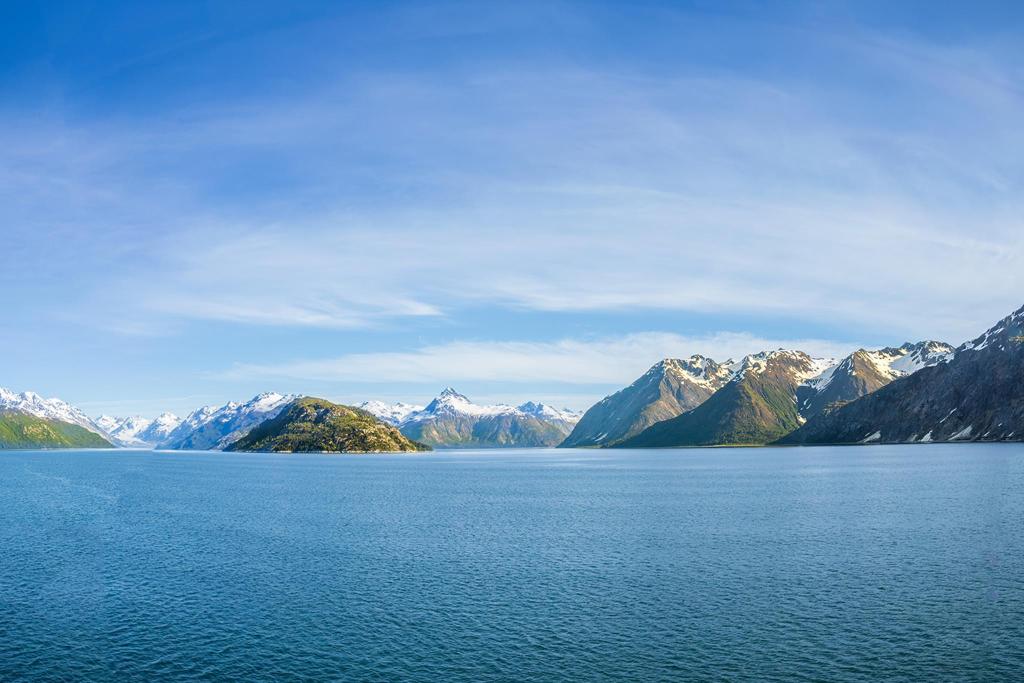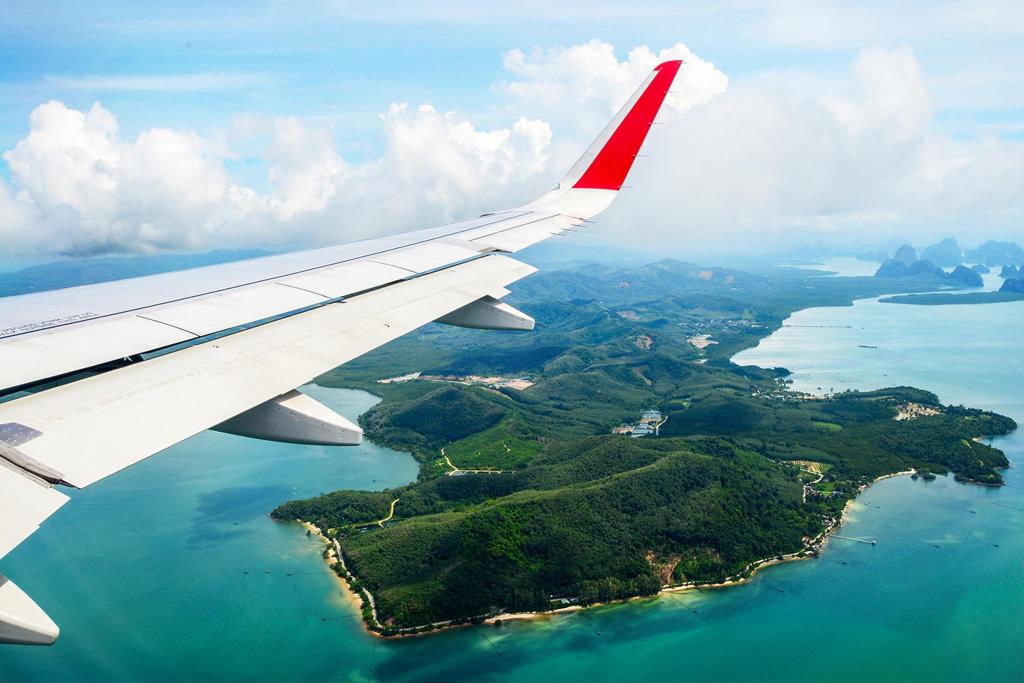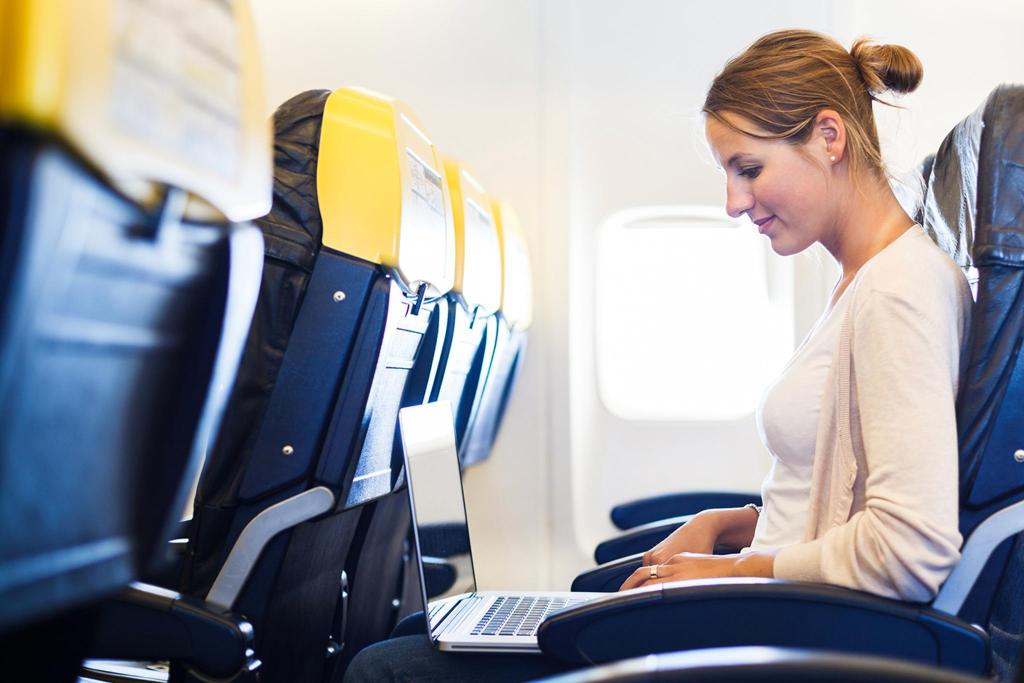
Flying to Alaska: The Complete Guide for Travelers
Flying to Alaska? We explore everything you need to know about flying to Alaska. Learn all about:
- Vacation highlights in Alaska
- Whether you need a passport
- Which airlines fly from the US
Discover Alaska's breathtaking landscapes, abundant wildlife, and unique cultural experiences. Whether you’re into rugged outdoor adventure or the comfort of scenic cruises, Alaska offers a wide range of highlights.
Vacations in Alaska: the highlights
Denali National Park

Home to North America's highest peak, Denali National Park is known for its stunning views, alpine forests, and rich wildlife including grizzly bears, moose, caribou, and wolves. The park offers everything from bus tours to challenging hiking trails.
Glacier Bay National Park
Accessible primarily by boat or plane, Glacier Bay is famous for its enormous glaciers, icy fjords, and whale-watching opportunities. The park offers close-up views of active tidewater glaciers calving, with the chance to see seals, sea lions, puffins, and even humpback whales.
Inside Passage and Alaskan cruises
This coastal route is best explored by a cruise, which takes you through a labyrinth of islands, fjords, and charming coastal towns like Juneau, Ketchikan, and Skagway. A cruise also offers a mix of marine wildlife encounters, including orcas and sea otters, as well as excursions to explore Native Alaskan culture, especially the traditions of the Tlingit, Haida, and Tsimshian peoples.
Kenai Fjords National Park
Known for the massive Harding Icefield, Kenai Fjords is a paradise for wildlife and glaciers. A boat tour is the best way to explore, giving you a front-row seat to calving glaciers, sea cliffs, and marine animals like dolphins and whales. For those who prefer hiking, the Exit Glacier trail provides a unique perspective on glacial retreat and stunning views of the icefield.
Aurora Borealis (Northern Lights)

This stunning natural phenomenon lights up the night with swirling green, purple, and red lights, creating an unforgettable experience for photographers and stargazers alike. The aurora season stretches from late August through April, with the best views in Fairbanks and further north, where the skies tend to be clearest.
Kodiak Island
Known for the famous Kodiak bears, this island is a remote paradise with incredible bear-watching opportunities, especially during the salmon runs. The island also boasts lush landscapes, scenic beaches, and a unique Russian heritage, visible in its architecture and cultural sites.
Wrangell-St. Elias National Park

The largest park in the US is also the least visited. It offers a remote wilderness experience with activities like glacier hiking, mountaineering, and exploring historic mining towns.
Anchorage and Fairbanks
Anchorage, Alaska’s largest city, offers a mix of urban and outdoor experiences, including museums, galleries, and trails like the Tony Knowles Coastal Trail. Fairbanks is a gateway to arctic adventures, including ice fishing, dog sledding, and easy access to the Northern Lights.
Talkeetna
This quirky town, often seen as the inspiration for the show *Northern Exposure*, is a base for Denali climbing expeditions but is also known for its charming small-town atmosphere, local art, and great food.
When is the best time of year to travel to Alaska?
The best time to travel to Alaska depends on what you want to experience, but generally, May through September is considered ideal. Here’s a breakdown by season and activity:
Summer (June - August)
Best for: warm weather, outdoor activities, wildlife, and cruises.
Nearly 24 hours of daylight in June offers endless time for exploration, with activities like hiking, fishing, kayaking, and glacier tours.
Shoulder Season (May and September)
Best for: fewer crowds, lower prices, spring and fall scenery
May has longer days and milder temperatures, with fewer crowds than summer. Snow is mostly melted, and wildlife becomes active, but prices are often lower than in peak summer. The weather starts to cool, and tourist numbers drop, making it a quieter time to visit.
Winter (October - April)
Best for: Northern Lights, winter sports, and an authentic Alaskan winter experience.
For those who love cold-weather sports, the winter brings dog sledding, skiing, ice fishing, and snowmobiling options.
Everything you need to know about flying to Alaska
Do you need a passport to fly to Alaska?
If you’re flying to Alaska from within the United States, you do not need a passport. Alaska is part of the US, so flights from other US states are considered domestic. For those connecting through Canada (common on some cruises and flight paths), a valid passport is required.
What airports are there in Alaska?
Ted Stevens Anchorage International Airport (ANC)
Located in Anchorage, this is Alaska’s largest and busiest airport.
Fairbanks International Airport (FAI)
Located in Fairbanks, this airport is popular for travelers heading to Denali National Park or seeking the Northern Lights.
Juneau International Airport (JNU)
Located in Juneau, the state capital, this airport primarily services Southeast Alaska such as Sitka and Ketchikan.
Ketchikan International Airport (KTN)
Located on Gravina Island, near the city of Ketchikan, this airport is accessible by ferry.
What airlines fly to Alaska?
Alaska Airlines
The largest carrier in Alaska, flying to Anchorage, Fairbanks, Juneau, and many smaller towns. Offers direct flights from major US cities like Seattle, Los Angeles, Portland, Chicago, and San Francisco.
Delta Airlines
Provides year-round service to Anchorage from cities like Seattle, Minneapolis, and Salt Lake City, with seasonal flights from Atlanta and other cities.
United Airlines
Flies to Anchorage and Fairbanks, with direct routes from Denver, Chicago, San Francisco, and Newark, especially during the summer months.
American Airlines
Offers seasonal flights to Anchorage from major hubs like Dallas-Fort Worth, Phoenix, and Chicago, primarily during the summer.
When is it cheapest to fly to Alaska?
The cheapest time to fly to Alaska is typically during the off-season, especially from late fall through early spring.
Fall (late September to November)
After the peak summer season, flight prices usually drop starting in late September. This period sees lower tourist numbers and reduced fares, making it one of the most affordable times to fly.
Winter (January to March)
Winter is the cheapest season overall for flights to Alaska. January and February, in particular, offer some of the lowest fares. However, flight options are more limited in winter, especially to remote locations.
Early spring (April)
April sees slightly warmer temperatures and lower fares than summer, as it’s just before the tourist rush. It’s a great time for travelers seeking lower prices and early spring landscapes, though some activities are still limited by snow.
How long does it take to fly to Alaska?
From the Lower 48 (Mainland US)
- Seattle, WA: 3.5 hours
- Portland, OR: 4 hours
- San Francisco, CA: 4.5 hours
- Los Angeles, CA: 5.5 hours
- Chicago, IL: 6 hours
- Dallas-Fort Worth, TX: 6.5 hours
- New York City, NY: 7.5 hours
- Atlanta, GA: 7 hours
After you land: what to do and where to stay in Alaska

Adventure awaits you. Alaska’s major cities and regions offer a variety of activities and accommodations, from high-end lodges to rustic cabins. Here’s a guide on what to do and where to stay.
Anchorage
Anchorage is a great starting point for exploring Alaska’s culture and wildlife. Visit the Anchorage Museum to learn about Alaskan history, take a scenic walk, or go on a day trip to explore glaciers, kayak, or visit local wildlife centers.
Where to stay:
- High-end: Hotel Captain Cook: offers panoramic views and fine dining.
- Mid-range: Hyatt House Anchorage: a cozy, centrally located option.
- Budget: Wingate by Wyndham Anchorage Downtown - Ship Creek: affordable, with free breakfast and indoor swimming pool.
Fairbanks
Besides the Northern Lights, in winter, try dog sledding, ice fishing, or soaking in the hot springs at Chena Hot Springs Resort. In summer, riverboat tours and the Museum of the North are popular options.
Where to stay:
- High-end: Pike's Waterfront Lodge: a scenic riverside lodge with stellar views.
- Mid-range: Hampton Inn & Suites Fairbanks: spacious rooms with a top-notch staff.
- Budget: 7 Gables Inn & Suites: offers friendly and affordable accommodations.
Juneau
Juneau is home to the impressive Mendenhall Glacier and home of Glacier Bay National Park.
Where to stay:
- High-end: Silverbow Inn Hotel & Suites: a charming boutique hotel with modern amenities.
- Mid-range: Baranof Downtown: centrally located with historic charm.
- Budget: Juneau Hotel: comfortable, with kitchenettes for longer stays.
Denali National Park
Denali offers endless outdoor adventure and a chance to spot wildlife like moose, caribou, and grizzly bears.
Where to stay:
- High-end: Camp Denali & North Face Lodge : known for its High-end and stunning views.
- Mid-range: Denali Bluffs Hotel : comfortable rooms and a great location.
- Budget: The Perch Resort: scenic spot on a stream, and only 20 minutes from the park.
Seward and Kenai Peninsula
This region offers some of Alaska’s best marine wildlife experiences.
Where to stay:
- High-end: Orca Island Cabins: high-end tent experience with bay views in nearly every direction.
- Mid-range: Seward Windsong Lodge: located just outside Seward, near the fjords.
- Budget: Miller’s Landing: cabins and tent sites with adventure tours nearby.
Sitka
Known for its unique Russian heritage, Sitka is great for historical and outdoor exploration.
Where to stay:
- Mid-range: Longliner Lodge and Suites: sea views available, alongside a stellar staff Comfortable, with easy access to town.
- Budget: Aspen Suites Hotel Sitka: fantastic location close to central Sitka, with lots of places to eat close by.
Kodiak Island
Fish, bear-watch, kayak, or hike through its lush landscapes.
Where to stay:
- High-end: The Peregrine Suite: a terrace with sea views and a jet tub to warm up and relax.
- Mid-range: Quality Inn Kodiak: clean rooms and close to the airport.
- Budget: Shelikof Lodge: convenient location with airport shuttle service.
Getting from the airport to your accommodation

- Taxi and rideshares: booking.com offers taxis from the airport and there are plenty of rideshares available at the airport and are a convenient way to get to downtown Anchorage – about a 15-minute drive.
- Airport shuttles: many hotels in Anchorage offer free airport shuttles.
- Public transit: Anchorage's People Mover bus system has routes that connect the airport to downtown Anchorage and other parts of the city.
- Car rentals: Anchorage has several car rental agencies on-site.

- Sustainability
- Travel policies
- Wellness
- Accessibility
- Flight tips
 How To Navigate Customs and ImmigrationMarch 28, 2025
How To Navigate Customs and ImmigrationMarch 28, 2025 Making US Airports Manageable for Neurodivergent TravelMarch 28, 2025
Making US Airports Manageable for Neurodivergent TravelMarch 28, 2025 The 10 Best Airports for LayoversMarch 28, 2025
The 10 Best Airports for LayoversMarch 28, 2025 The Complete Guide to Flying Premium EconomyMarch 28, 2025
The Complete Guide to Flying Premium EconomyMarch 28, 2025 The Ultimate Packing List for VacationsMarch 28, 2025
The Ultimate Packing List for VacationsMarch 28, 2025 What are the Best US Airports for Flight ConnectionsMarch 18, 2025
What are the Best US Airports for Flight ConnectionsMarch 18, 2025 Which Times of Year are the Busiest for Air Travel in the US?November 7, 2024
Which Times of Year are the Busiest for Air Travel in the US?November 7, 2024 Flying to Hawaii: the complete guide for travelersSeptember 12, 2024
Flying to Hawaii: the complete guide for travelersSeptember 12, 2024 What Is Global Entry, and How Does It Work?August 25, 2024
What Is Global Entry, and How Does It Work?August 25, 2024 Everything you need to know to book a flightJuly 24, 2024
Everything you need to know to book a flightJuly 24, 2024
You might also like these
Learn essential airplane etiquette with our guide to the dos and don'ts of flying. Master plane manners, armrest rules and more for a smooth journey.
Do you need a passport to fly to Alaska? Explore everything you need to know about flying to Alaska, including which airlines fly from the US and more.
Have spare $50,000 to burn? Here are the world’s most expensive plane tickets you can buy and a glimpse at what you get for your money.
Our travel experts share which airlines have incredible business-class seats and how they compare.
Stay productive with these expert business travel tips: maximize comfort, utilize onboard amenities, and optimize your travel time for efficiency.
Discover essential airplane hacks from seasoned travelers. Save time, money and stay comfortable with these expert tips for a smoother flight.








